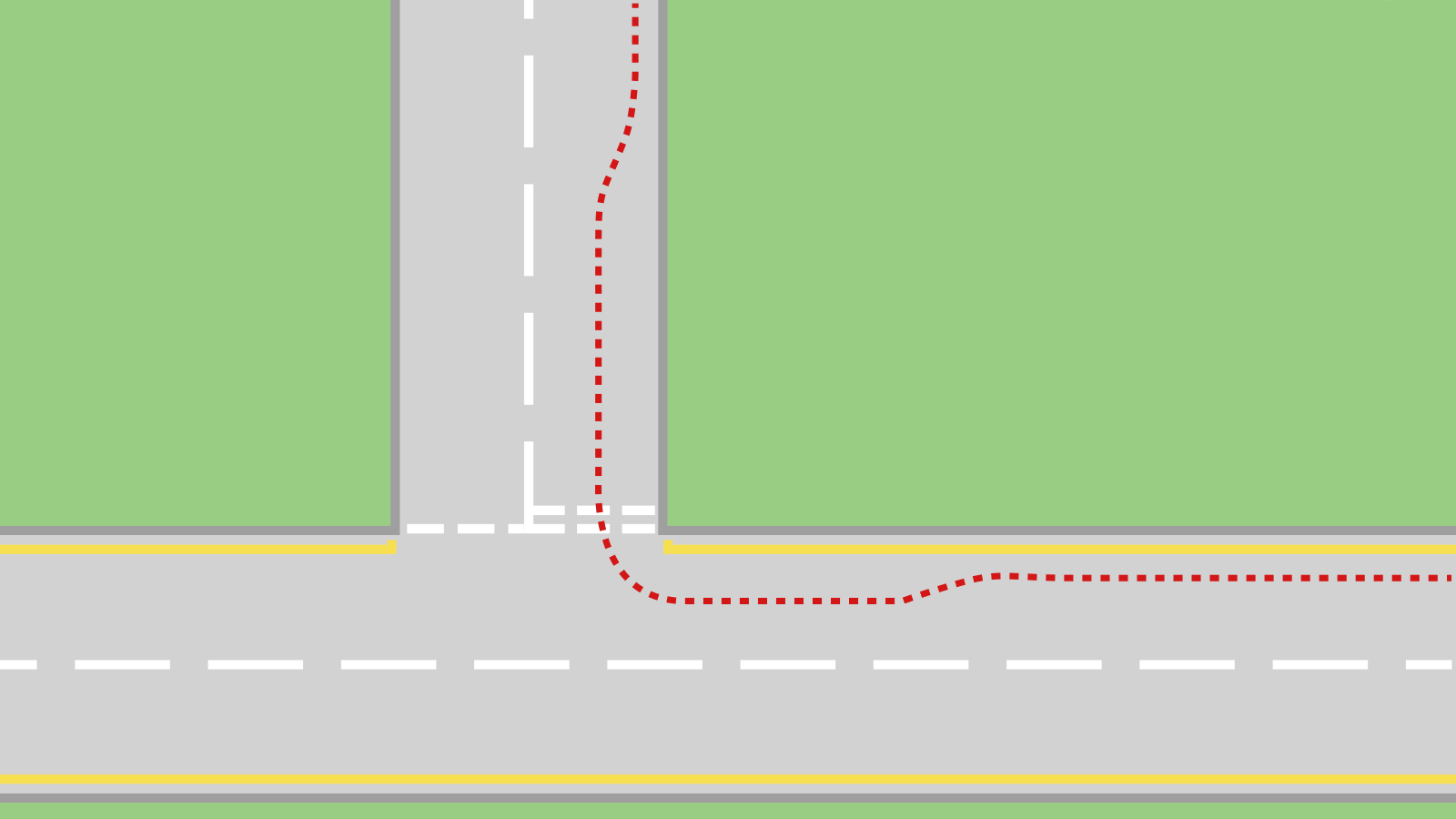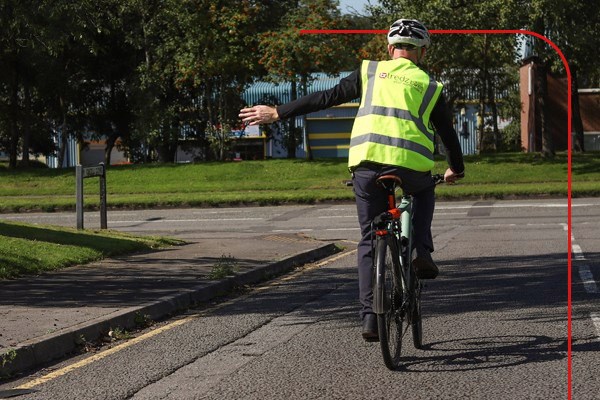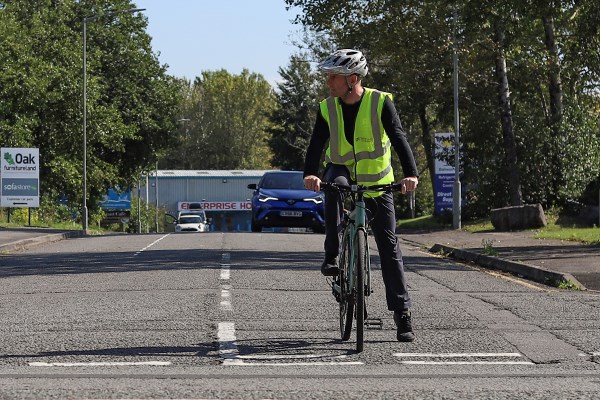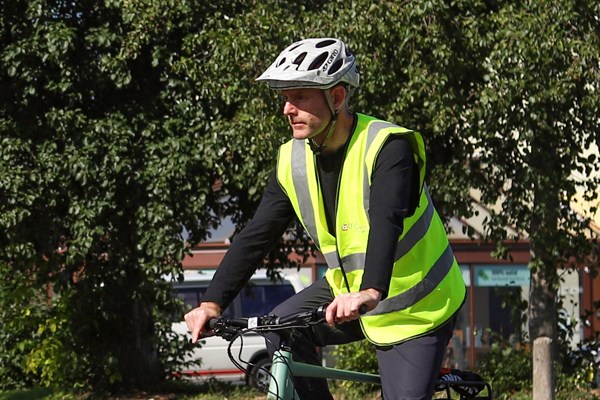The best way to cycle safely through road junctions is to use a systematic routine. This will include looking all around you, communicating your intentions to other road users, choosing a suitable riding position and prioritising who goes first at the junction.
We’ve broken down the sequence of turning left onto a main road into clear steps to help you to ride safely and more responsibly.
1Look behind to check it is safe before moving position
As you approach the junction look over your right shoulder to see what’s behind you.
As well as seeing what is behind you, looking over your shoulder will tell other road users that you are about to do something.

2Move into the primary position as you approach the junction
Move from the secondary position (to the left of the traffic lane about an arm’s length away from the curb) into the primary position (in the centre of the traffic lane).
You can move into the primary position if there are no vehicles behind you or as soon as there is a suitable space between the vehicles moving in the traffic lane. Adjust your speed as necessary, so that you can move into position safely.
 The primary riding position is in the centre of the traffic lane.
The primary riding position is in the centre of the traffic lane.
Adopting the primary cycling position, to highlight your presence to traffic ahead and prevent following drivers from overtaking, is especially important when negotiating road junctions.

3
Signal your intentions to other road users
Signal your intention to turn left, once you are in the primary position. Hold your left arm out horizontally, three seconds is usually long enough. Allow enough time to complete your signal in time to slow down and stop at the junction if necessary.
Continue to look towards the junction and put your hands back on the handlebars before applying the brakes.
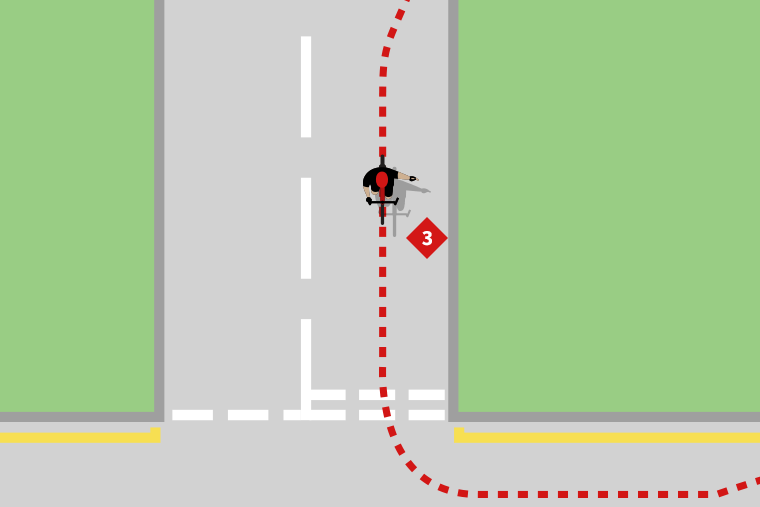
3aApproach the junction and prepare to stop and give way
As you approach the junction look for traffic approaching from the right. Do this as soon as you can, so you can see any approaching traffic.
 Vehicles moving on the main road go first, so be prepared to stop and give way. If there are no oncoming vehicles, or there is enough space in the traffic lane for you to complete the manoeuvre, you can continue without stopping.
Vehicles moving on the main road go first, so be prepared to stop and give way. If there are no oncoming vehicles, or there is enough space in the traffic lane for you to complete the manoeuvre, you can continue without stopping.

3bGive way to traffic on the main road
If there is oncoming traffic on the main road, stop at the double dashed give way lines to let them go past. This is because vehicles on teh main road go first at junctions.
When you stop your front wheel should be level with the give way lines but not over them. Put your left foot on the ground and position your right foot on your pedal with the crank arm in the 10 past 2 position. This will allow you to move off quickly when you need to. Keep your brakes on while you are stopped to prevent you from rolling forward.
Continue on as soon as you see that there is a safe space in the traffic to do so.
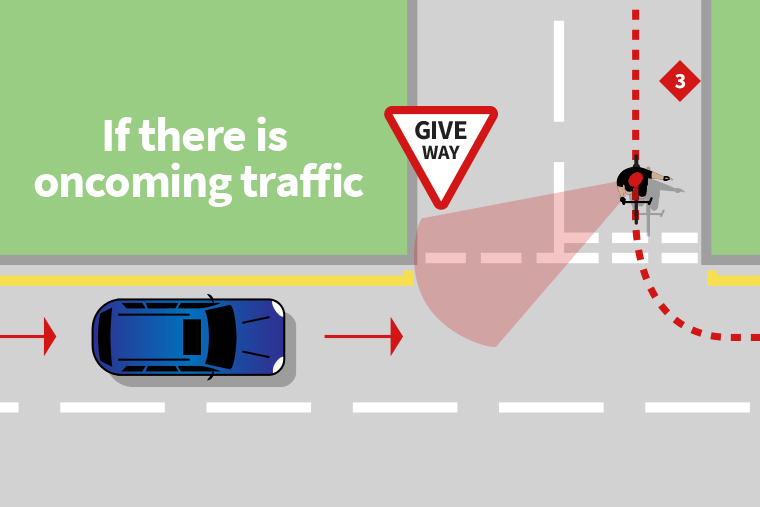
4Remain in primary position throughout the manoeuvre
Remain in the primary position throughout the manoeuvre. This is the most visible position, so it is the safest way to ride through the junction.
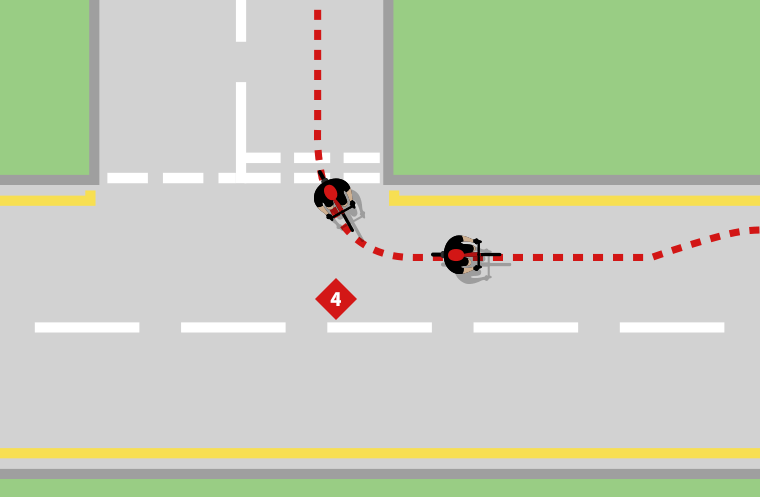
5Look behind before moving back into secondary position
Once you are cycling on the main road you can move back into the secondary position when appropriate.
 Look over you left shoulder to check that another cyclist isn’t moving up inside. Once it is safe to do so move back into the secondary position.
Look over you left shoulder to check that another cyclist isn’t moving up inside. Once it is safe to do so move back into the secondary position.
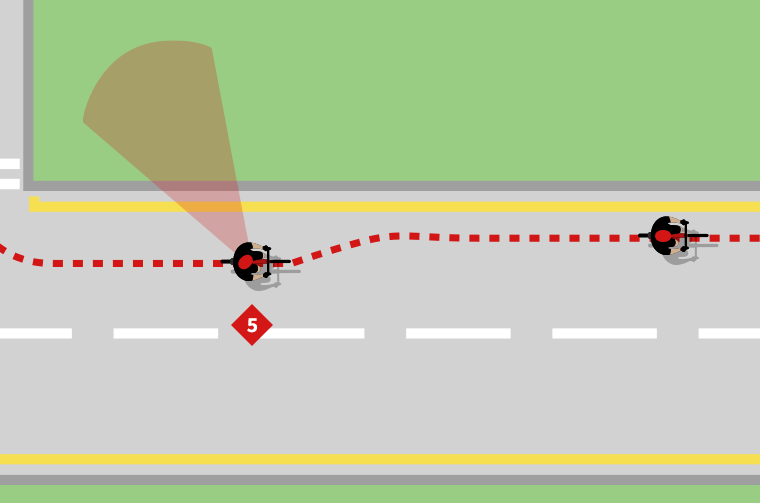
The Manouevre
